
Palace of Fontainebleau, located 55 kilometers southeast of the center of Paris, in the commune of Fontainebleau, is one of the largest French royal châteaux. The medieval castle and subsequent palace served as a residence for the French monarchs from Louis VII to Napoleon III. Francis I and Napoleon were the monarchs who had the most influence on the palace as it stands today. It became a national museum in 1927 and was designated a UNESCO World Heritage Site in 1981 for its unique architecture and historical importance.
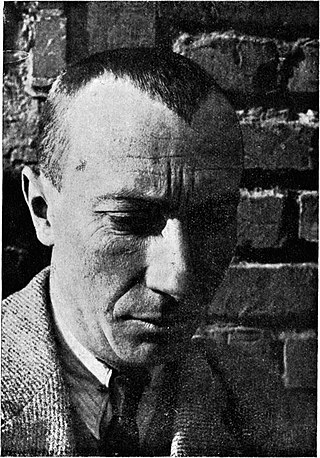
Hans Peter Wilhelm Arp, better known as Jean Arp in English, was a German-French sculptor, painter and poet. He was known as a Dadaist and an abstract artist.

Nancy Spero was an American visual artist. Born in Cleveland, Ohio, Spero lived for much of her life in New York City. She married and collaborated with artist Leon Golub. As both artist and activist, Nancy Spero had a career that spanned fifty years. She is known for her continuous engagement with contemporary political, social, and cultural concerns. Spero chronicled wars and apocalyptic violence as well as articulating visions of ecstatic rebirth and the celebratory cycles of life. Her complex network of collective and individual voices was a catalyst for the creation of her figurative lexicon representing women from prehistory to the present in such epic-scale paintings and collage on paper as Torture of Women (1976), Notes in Time on Women (1979) and The First Language (1981). In 2010, Notes in Time was posthumously reanimated as a digital scroll in the online magazine Triple Canopy. Spero has had a number of retrospective exhibitions at major museums.

Paul Nash was a British surrealist painter and war artist, as well as a photographer, writer and designer of applied art. Nash was among the most important landscape artists of the first half of the twentieth century. He played a key role in the development of Modernism in English art.
John Northcote Nash was a British painter of landscapes and still-lives, and a wood engraver and illustrator, particularly of botanic works. He was the younger brother of the artist Paul Nash.
Antonio Saura Atarés was a Spanish artist and writer, one of the major post-war painters to emerge in Spain in the fifties whose work has marked several generations of artists and whose critical voice is often remembered.
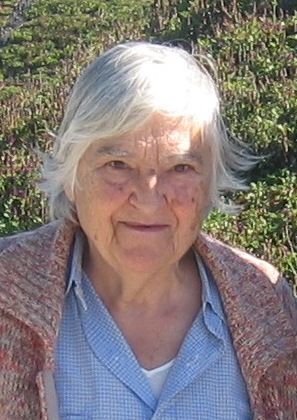
Etel Adnan was a Lebanese-American poet, essayist, and visual artist. In 2003, Adnan was named "arguably the most celebrated and accomplished Arab American author writing today" by the academic journal MELUS: Multi-Ethnic Literature of the United States.
Bethan Huws is a Welsh multi-media artist whose work explores place, identity, and translation, often using architecture and text. Her work has been described as "delicate, unobtrusive interventions into architectural spaces".
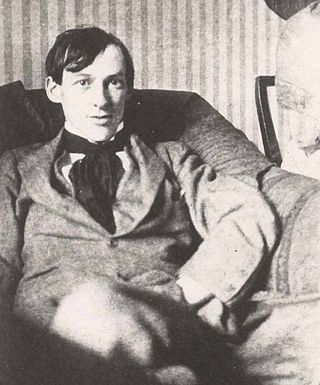
James Dickson Innes was a Welsh painter, mainly of mountain landscapes but occasionally of figure subjects. He worked in both oils and watercolours.

Barthélémy Toguo is a Cameroonian painter, visual and performing artist. He currently splits his time living and working in both Paris, France and Bandjoun, Cameroon. He works in a variety of media aside from visual and performing arts including photographs, prints, sculptures, videos, and installations.
Garrick Salisbury Palmer was an English painter, wood engraver, photographer and teacher.

Aleš Veselý was a Czech sculptor, graphic artist, painter and academy teacher.
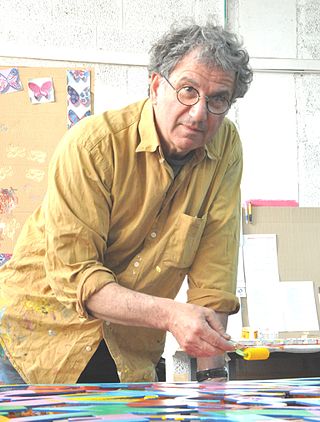
David (Dudu) Gerstein is an Israeli painter, sculptor, draftsman, and printmaker. He began as a figurative painter and was recipient of the Israel Museum Prize for illustration. At the end of the 1970s he wished to expand the limits of two-dimensional painting, into painting in three-dimensions. He began cutting out the main subjects of each painting and to cancel the background, creating a unique and iconic cutout images, free standing in space, without the standard and traditional square frame.

Ugo Rondinone is a Swiss-born artist widely recognized for his mastery of several different media—most prominently sculpture, drawing and painting, but also photography, architecture, video and sound installation—in the largely figurative works he has made for exhibitions in galleries, museums and outdoor public spaces around the world. He has never limited himself to a particular material, no more than he has to a single discipline. Lead, wood, wax, bronze, stained glass, ink, paint, soil and stone are all tools in a creative arsenal that the artist has employed to extend the Romantic tradition in works that are as sensitive to the passage of time as to the nuances of body language and the spoken word.
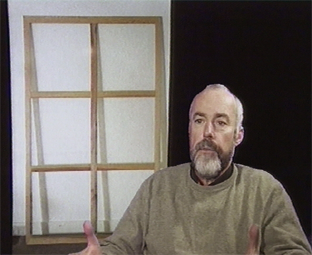
Daniel Dezeuze is a French artist and a founding member of the French group of artists called Supports/Surfaces. This group started to form in 1966. Their common concern was a desire to deconstruct painting in order to re-examine its history and question its nature. Colour is a fundamental question in many of their works. They frequently used non-traditional materials and referred to other non-western cultures.
Robert Bero (1941–2007) was an American artist and print maker. Known for his etchings and woodcuts, Bero also worked in pen and ink, crayon, pastel, pencil, water color and collage. He served on the faculties of the State Universities of New York at Potsdam and at Purchase, Ramapo College in New Jersey and Brown University in Rhode Island. A long-time resident of Tuxedo Park, New York, in 2009 the town put up an exhibition of his work at the newly restored, historic Tuxedo Park Train Station.

Nigel Hall is an English sculptor and a draughtsman.
Petah Coyne is a contemporary American sculptor and photographer best known for her large and small scale hanging sculptures and floor installations. Working in innovative and disparate materials, her media has ranged from the organic to the ephemeral, from incorporating dead fish, mud, sticks, hay, hair, black sand, specially-formulated and patented wax, satin ribbons, silk flowers, to more recently, velvet, taxidermy, and cast wax statuary. Coyne's sculptures and photographs have been the subject of more than 30 solo museum exhibitions.

Fabienne Verdier is a French painter who works in France after years of studies in China. She was the first non-Chinese woman to be awarded a post-graduate diploma in fine arts by the Sichuan Fine Arts Institute in Chongqing, China.
Pierre Emile Gabriel Lelong was a neo-Impressionist painter based in France, winner of the Grand Prix des Peintres Témoins de Leur Temps in 1972. He is considered one of the postwar group of artists referred to as “La Nouvelle Ecole de Paris.”













